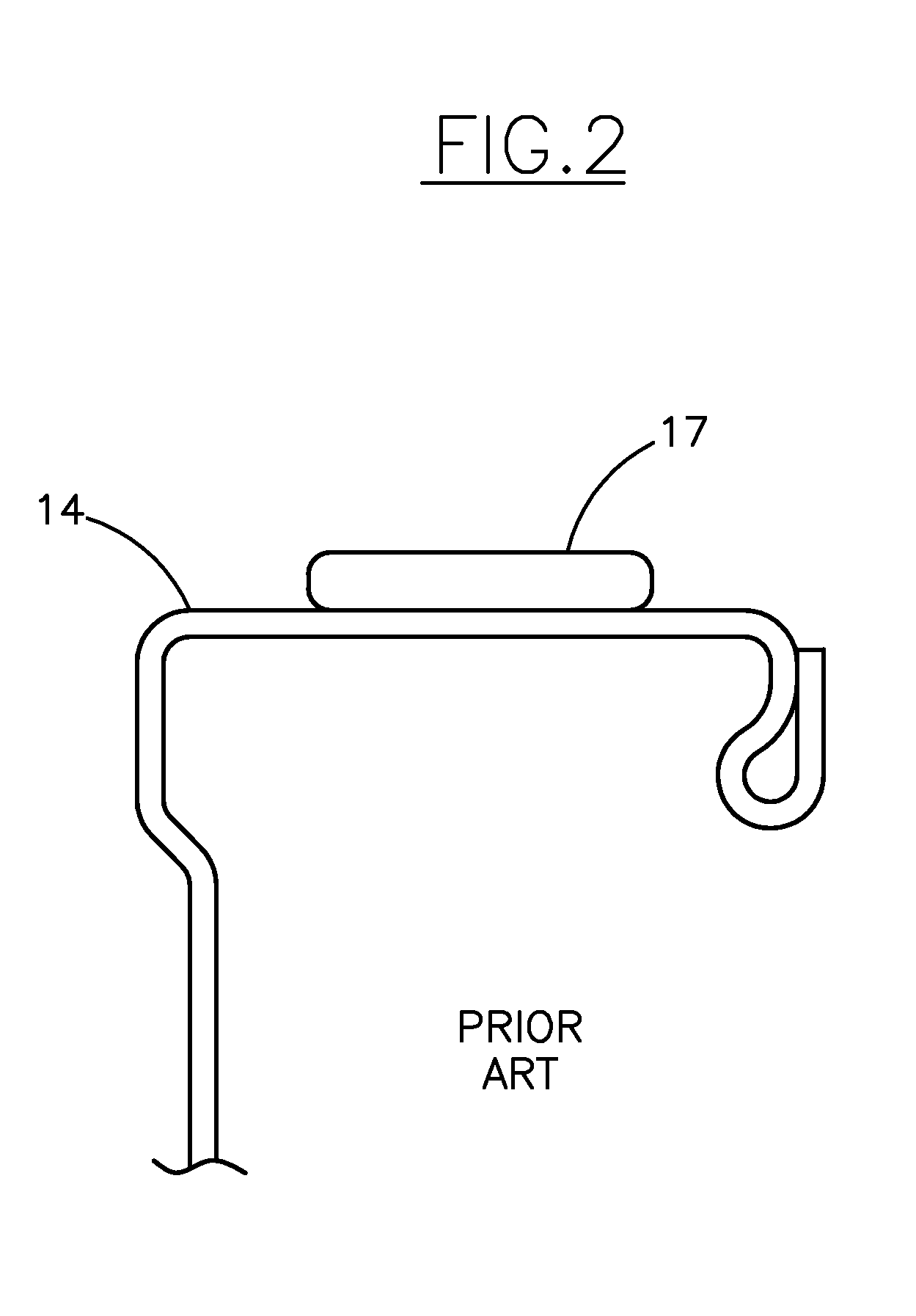System and method for joining and hanging ducts
a technology of joining and hanging ducts, applied in the direction of screws, lighting and heating apparatus, heating types, etc., can solve the problems of wasting energy, wasting labor, and destroying gaskets, etc., and achieve the effect of saving labor, saving energy, and being done very quickly
- Summary
- Abstract
- Description
- Claims
- Application Information
AI Technical Summary
Benefits of technology
Problems solved by technology
Method used
Image
Examples
Embodiment Construction
[0109]Referring to the drawings wherein like numerals refer to like parts, FIG. 1 illustrates a typical prior art duct flange connection as currently practiced showing a clip 18, a gasket 17 and duct section end flanges 14. FIG. 1A teaches applying the clip 18 by rotating it into position over and around the flanges 14 as illustrated by the arrow. FIG. 1B shows the clip 18 in a final holding position about the flanges 14.
[0110]FIG. 2 gives the information needed to place the gasket tape 17 properly on the duct section flanges 14. FIG. 3 and FIG. 3A illustrate the typical adhesive tape 17 used for duct joining and shows the non-stick paper backing 20 provided with the tape 17. As the tape 17 is unwound and applied the paper 20 must be crumpled together or otherwise disposed of.
[0111]FIG. 4 shows the tape 17 applied to the end of a duct section flange 14 with a lap 39 where the end of the tape 17 starts and stops. Inserted corner plates 21 are shown in place in the duct section end fl...
PUM
| Property | Measurement | Unit |
|---|---|---|
| length | aaaaa | aaaaa |
| thickness | aaaaa | aaaaa |
| angle | aaaaa | aaaaa |
Abstract
Description
Claims
Application Information
 Login to View More
Login to View More - R&D
- Intellectual Property
- Life Sciences
- Materials
- Tech Scout
- Unparalleled Data Quality
- Higher Quality Content
- 60% Fewer Hallucinations
Browse by: Latest US Patents, China's latest patents, Technical Efficacy Thesaurus, Application Domain, Technology Topic, Popular Technical Reports.
© 2025 PatSnap. All rights reserved.Legal|Privacy policy|Modern Slavery Act Transparency Statement|Sitemap|About US| Contact US: help@patsnap.com



